
Discovery of the M31 [OIII] emission arc
Recently, a major discovery by an international team of amateur astronomers and scientists has become a huge online hit, and this new discovery is just located in one of the
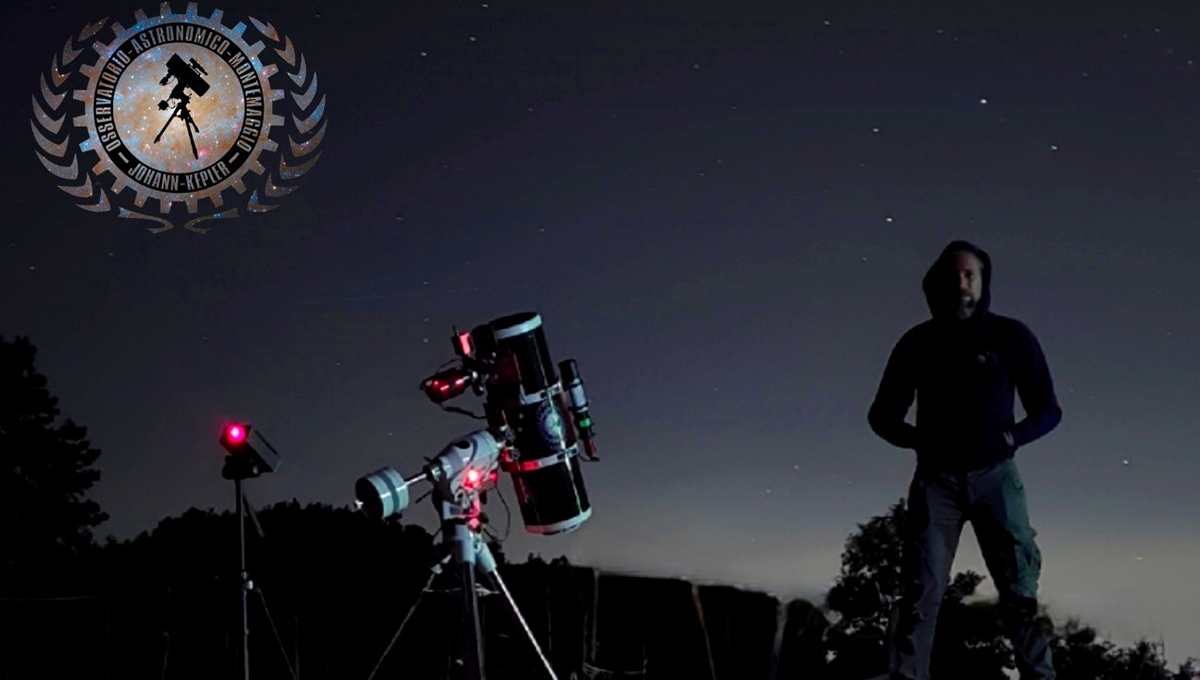
Hello Federico, thanks for accepting our interview invitation. Congratulations on winning the ASIWEEK competition in week #17/2024!
I am very happy to have won this #ASIWEEK and I thank you. I am Federico Vittorio Mantovani, I am Italian and I am forty-five years old, I am completely self-taught and for me this recognition indicates that the path taken is the right one.

I started this passion in 2020 without imagining one day I would take photos of the deep sky. In 2020 I was expecting my firstborn and decided to study. I forced myself to enter this world before family commitments loomed. I didn’t even know if I would become a visualist or an astrophotographer but as I studied the ideas became clearer. I took my first photo in August 2021 with an ASI462MC….then from there the appetite grew. I took my first real deep sky image in winter 2022 after upgrading to a more suitable ASI2600MC Pro.

Since I was a child I have always admired the starry sky. We had a house in the countryside and I also did a lot of outdoor activities with the scouts. I always told myself one day I would buy a telescope but that childhood fantasy never materialized. Then in 2017 I bought my first house, I bought it thinking one day I would have a telescope and I looked for it under the darkest sky possible compatible with my work needs. For me, astronomy is a set of passions, the love for the sky, the love for the mechanical element is pure spirituality and makes me feel connected with life and nature. It pushes us to find the existential answers.

The subject of the photo has always fascinated me for its reflection component, most of the ic405 photos are taken in narrow band so this reflection part is almost never highlighted, however I am a lover of dark skies and broadband shots.
The very useful UV-IR cut glass of my ASI2600MC Pro is perfect for this purpose. In winter I have little time, I am often forced to do single sessions without the opportunity to integrate further, however I managed to bring home precious data and obtain the image I wanted. I carried out the polar alignment as soon as I could to be ready to launch the plan in ASIAIR and taking advantage of the meridian flip to take the flats, I continued to shoot until the first light of dawn.

I spent a year studying and choosing my equipment. I opted for a Newton 200/800 f4 on a generous Azeq6, combined with these I fully embraced the ZWO philosophy made of Asiair Pro and its cameras; I currently use a 462mc for imaging and a 2600mc pro + a 120mm mini for driving on deep sky subjects. The time to take photographs with two children (in the meantime the second child has also arrived) is short and so I have reduced the time needed to put the setup into operation, it only takes 30 minutes to go from everything disassembled to everything ready to take photographs. The tube is like my creation, I disassembled and reassembled it, solving small problems and bringing it to a new level. The last update was the switch to a more generous mount, a cq350 pro, I have the ambition of taking a 300/1200 to the Alps in one of the darkest skies in Europe.
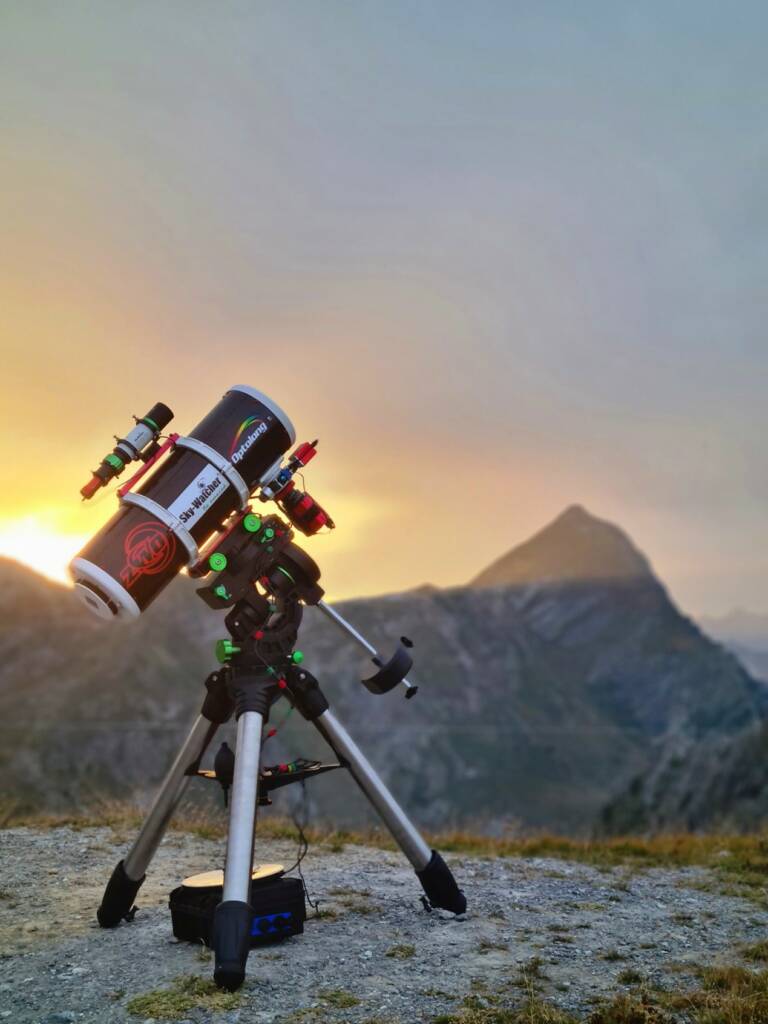
Every time I go to take a photograph I think, how beautiful the object I’m shooting is, saying that there is a favorite subject is difficult, every time I’m amazed by the beauties of the cosmos. so I think my favorite subject is the one I have yet to photograph, it seems like an excellent philosophy.
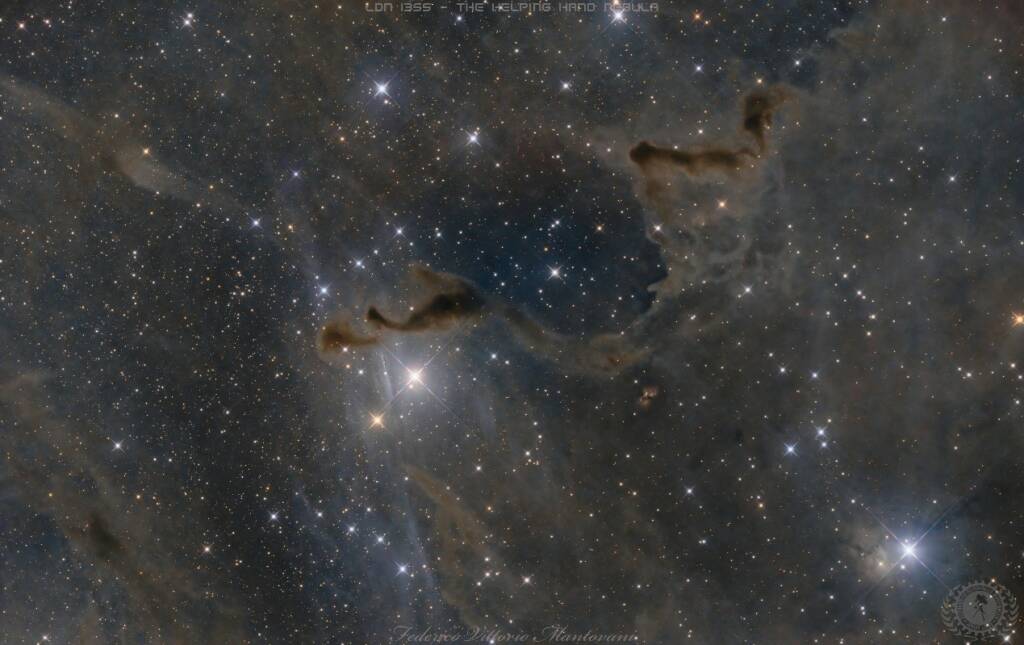
In my region I enjoy a good sky, Montemaggio in the province of Genoa (Italy) is located at 780 meters and my SQM meter recorded values close to 21, it is where my fixed position is located and from where I take most of the photographs, but I often move inland and become itinerant. This photograph of the flaming star was taken at the San Fermo Pass where you can enjoy an even better sky, there you also reach an SQM of 21.20 at the zenith. Sometimes I went to photograph from one of the darkest skies in Europe at the Fauniera refuge at 2500 meters in the Alps… what an incredible sky! There my reader marked the highest values I have ever recorded SQM 21.68.

The post production of an image is another monolith of this passion that must be mastered, the first photos taken leave us speechless but as we grow we become increasingly stricter with ourselves. To get started, even free software is enough, the important thing is to understand that a good photo is born in the field with excellent shots and the right integration.

A memorable story could be the one that saw me dealing with the ghost nebula Sh2-136 vdB 141; I went to Colle Vallonetto in the Alps and at 11pm I was still enveloped in a thick fog, after a while the sky opened but the instruments, despite having covered them, were covered in condensation. However, I decided to continue and drove with my soaked refractor trying to find the best driving settings. For 2 whole hours I continued to follow the changes in the weather, changing settings and parameters without ever giving up; then peace, finally everything was perfect, the humidity was also gone and the telescope completely dry, finally I had time to enjoy the Milky Way. The moral of this story is never give up! And this photo of the Ghost Nebula proves it.
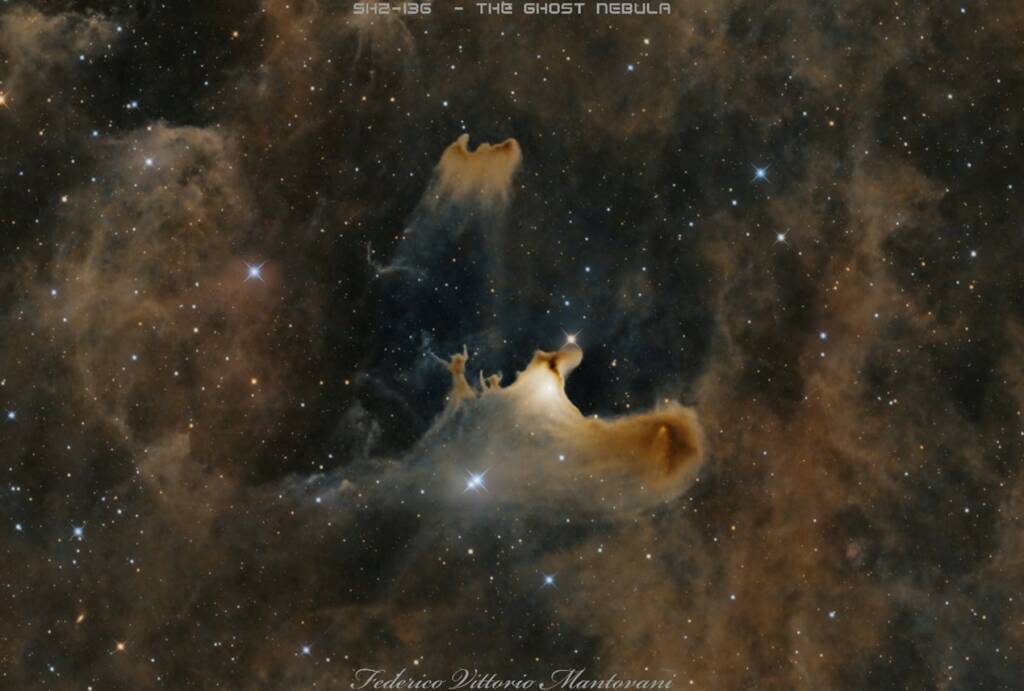
Astrophotography has changed a lot in the last 10 years, it has become much more accessible and affordable. Technology has made everything friendlier and less exhausting.
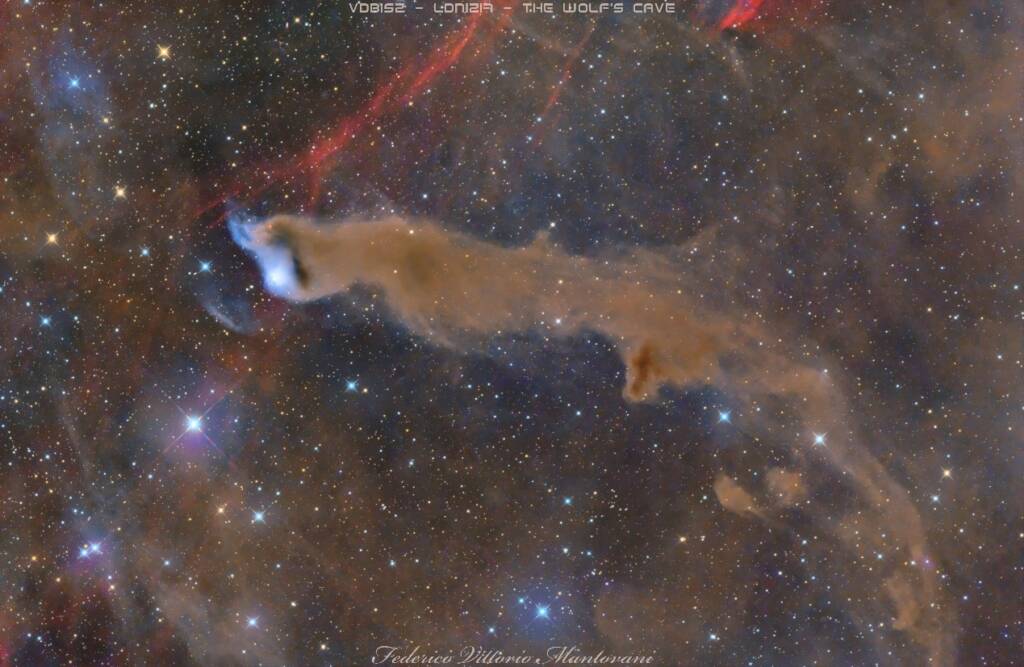
My advice for newcomers is to never get discouraged, in this passion mistakes and failures are the most precious thing that can happen, to progress we need to take advantage of it and the results will surely come.
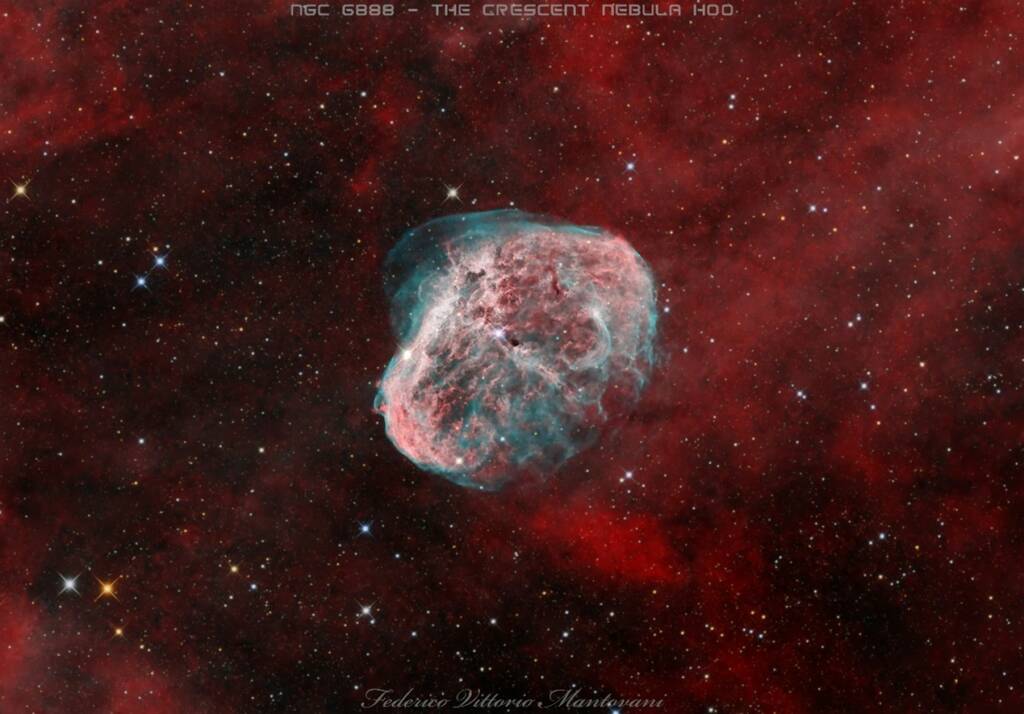
My first camera was an ASI462Mc….I started immediately with an ASIAIR Pro and an ASI2600 MC Pro. To drive I use an ASI120MM Mini and recently I purchased an OAG L. I also experimented with taking narrow band photos to make HOO and SHO combinations with a color camera thanks to the filter holder drawer and using monoband filters. How can we not mention the fantastic EAF, a friend of many automatic focuses? I’m just waiting for a field rotator to come out, I’d be a happy man.

For future sessions, I like not to plan them too far in advance; when family commitments allow me, I will see what the sky proposes and I will do the usual study on the framing and planning of the night.
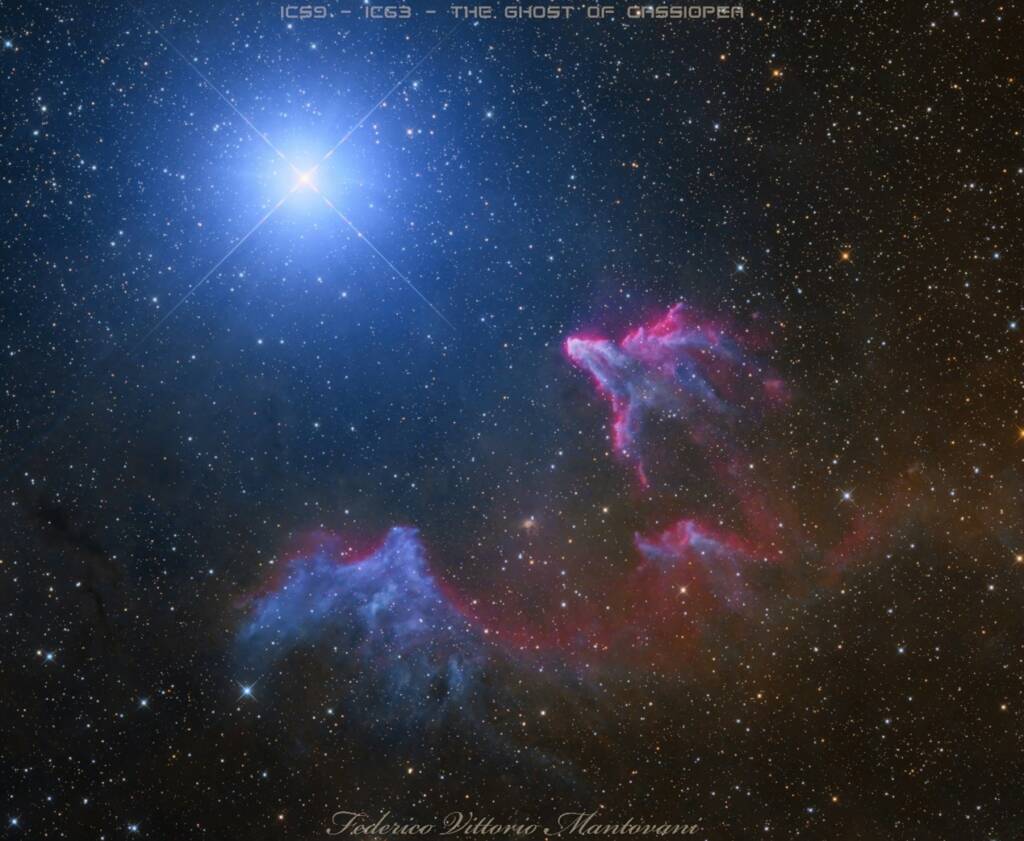

Recently, a major discovery by an international team of amateur astronomers and scientists has become a huge online hit, and this new discovery is just located in one of the
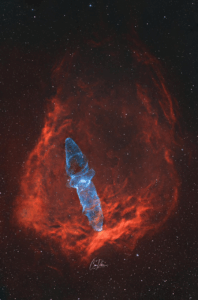
To most people, this might just look like a pretty picture. But to astrophotographer Cem Diken, it’s the result of three years of chasing a nearly invisible ghost in the

I was born in Guadalajara, I’m 38 years old, a musician, communications and electronics engineer, and president of the Guadalajara Astronomical Society A.C. since 2020. First Contact with Astronomy Since
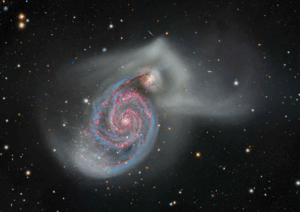
This stunning collaborative project comes from astrophotographers Alex Linde and Thomas Hansson, who joined forces across borders to photograph the Whirlpool Galaxy from Sweden, Poland, and Texas, USA. Thomas traveled across
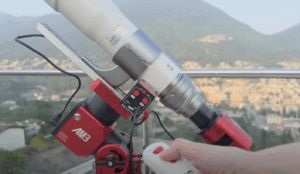
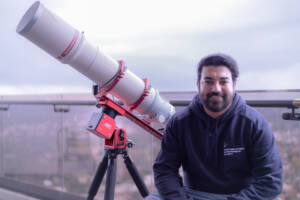
“Two thoughts immediately crossed my mind—the vastness of the cosmos, and that I could also create images like the ones that inspired me.” ” If you spend more time debugging than